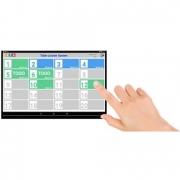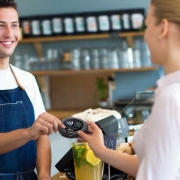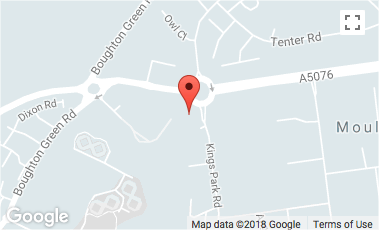Elevating Dining Dynamics: The Impact of Table Tracking Systems in Modern Restaurants
The restaurant industry is undergoing a technological revolution, and table tracking systems have emerged as a significant innovation that is transforming the dining experience. These systems offer restaurants the ability to optimise operations, elevate customer service, and streamline communication between staff and diners. From efficient order management to personalised service, table tracking systems are reshaping the way restaurants operate and enhancing overall customer satisfaction.
The Rise of Table Tracking Systems:
Table tracking systems represent a new era of guest engagement and operational efficiency. Beyond the basic function of identifying table locations, these systems integrate seamlessly with various restaurant processes to create a dynamic and personalised dining journey:
- Efficient Order Management: Table tracking systems allow wait staff to accurately link orders to specific tables, ensuring that the right food reaches the right guests. This eliminates confusion and prevents delays in food delivery.
- Optimised Service: Staff can monitor the progress of each table’s order, ensuring timely service and allowing them to intervene if any issues or delays arise.
- Enhanced Guest Experience: With real-time updates on the status of their orders, staff can ensure guests are kept informed about their meals, reducing frustration and enhancing overall satisfaction.
- Seamless Communication: Table tracking systems facilitate communication between the kitchen, bar, and serving staff, reducing errors and streamlining the flow of operations.
- Personalised Service: By accessing data and order history, staff can provide tailored recommendations and ensure that special requests are met.
Scenarios Where Table Tracking Systems Excel:
- High-Volume Restaurants: In bustling restaurants with high customer turnover, table tracking systems help manage the influx of orders and ensure a seamless dining experience.
- Fast-Casual Establishments: Table tracking systems are a natural fit for fast-casual restaurants with counter ordering with food run to tables, where efficient service and quick order turnaround are essential.
- Customisation-Driven Dining: Restaurants that offer extensive customisation options, such as build-your-own meals, benefit from table tracking systems that accurately capture data for order delivery times.
- Order at Counter – Run to Table: For restaurant that take food orders at the counter, table tracking systems can be discreetly integrated to enhance service quality without disrupting the ambience, no more searching for which table a diner is seated at.
Â
Benefits of Implementing Table Tracking Systems:
- Streamlined Operations: Table tracking systems improve workflow by minimising errors and miscommunication between staff members. This leads to faster service and a more efficient dining experience.
- Reduced Wait Times: With better order management and communication, table tracking systems contribute to shorter wait times for food and drinks.
- Enhanced Guest Satisfaction: The transparency and personalised service offered by table tracking systems enhance guest satisfaction, encouraging repeat visits and positive word-of-mouth.
- Data-Driven Insights: The data collected through these systems can offer valuable insights into wait times, peak hours, and ordering patterns, aiding in strategic decision-making.
- Staff Empowerment: By providing real-time information, table tracking systems empower staff to address guest concerns promptly and provide proactive solutions.
- Staff Efficiency: Providing complete visibility of where guests are seated ensures restaurant operators with the ability to utilise staff to run food to tables in the most efficient manner and operate with correct staffing numbers.
- Reporting: Table tracking systems can provide valuable data & management reports which operators can use to make strategic decisions to improve service standards & enhance the guest experience.
Implementing Effective Table Tracking Systems:
For a successful integration of table tracking systems, restaurants should consider the following:
- Seamless Integration: Choose systems that seamlessly integrate with the restaurant’s existing point-of-sale (POS) and order management systems.
- Staff Training: Train staff on how to use the system effectively and ensure they are provided with system data to improve food service times.
- Customisation: Opt for systems that can be tailored to match the restaurant’s branding and operational style.
- Maintenance and Updates: Regularly maintain and update the system to ensure it remains reliable and up-to-date.
Conclusion:
Table tracking systems are shaping the modern restaurant landscape by revolutionising how guests and staff interact. By improving order accuracy, enhancing communication, and providing a more personalised experience, these systems contribute to operational excellence and guest satisfaction. As the restaurant industry continues to evolve, table tracking systems stand as a testament to the power of technology in creating seamless, efficient, and delightful dining experiences for guests.
Find out more Table Tracking









